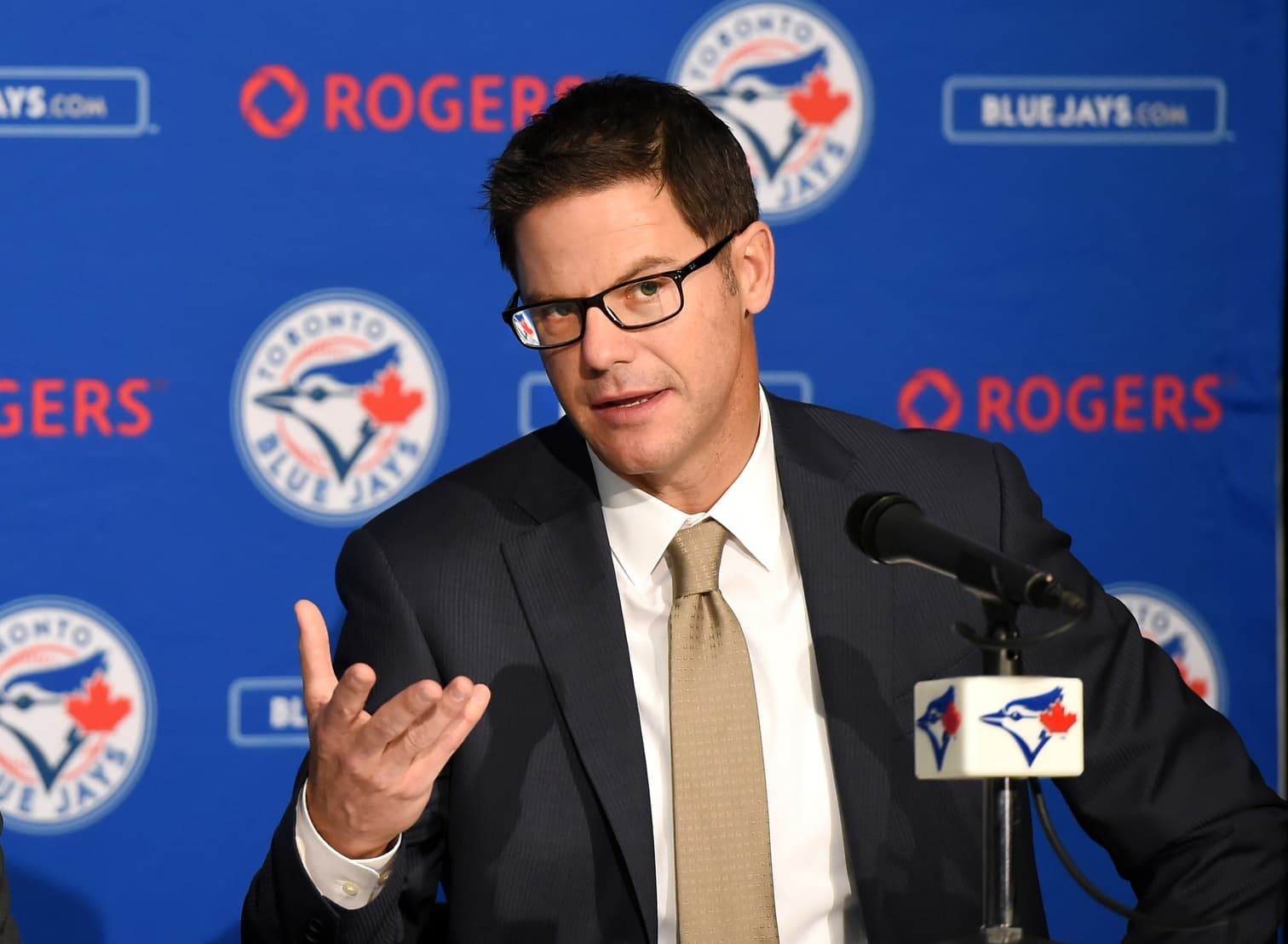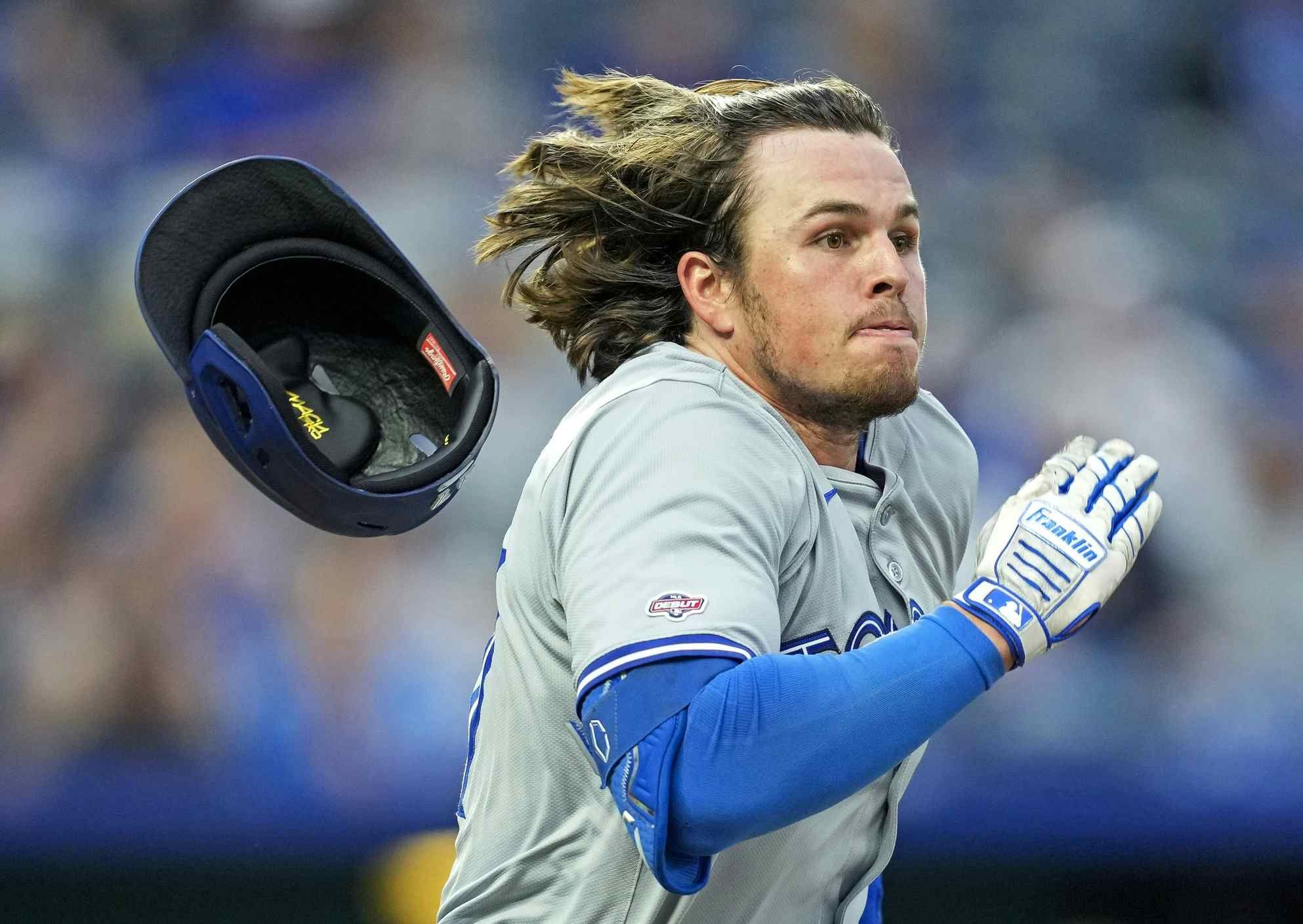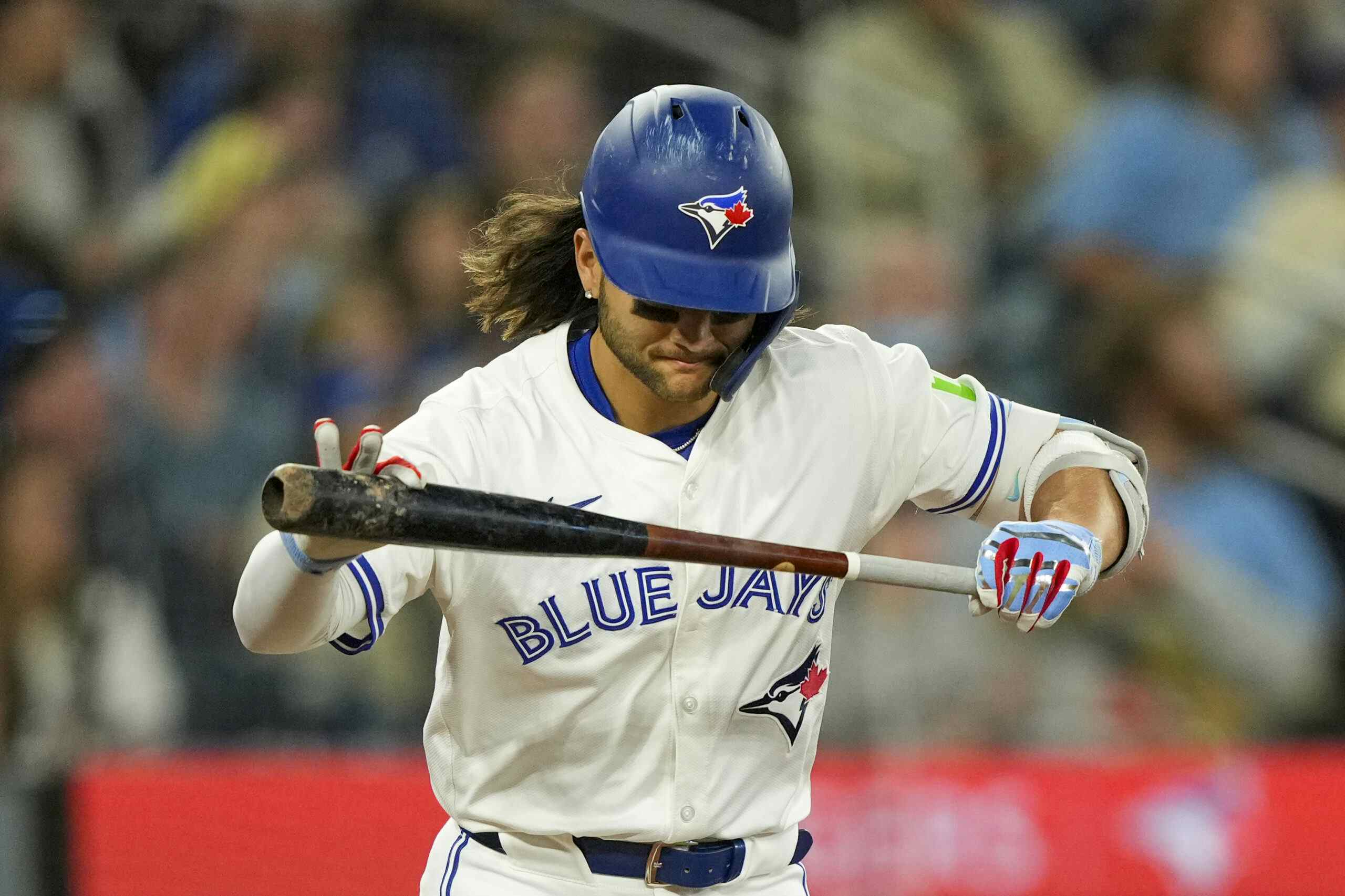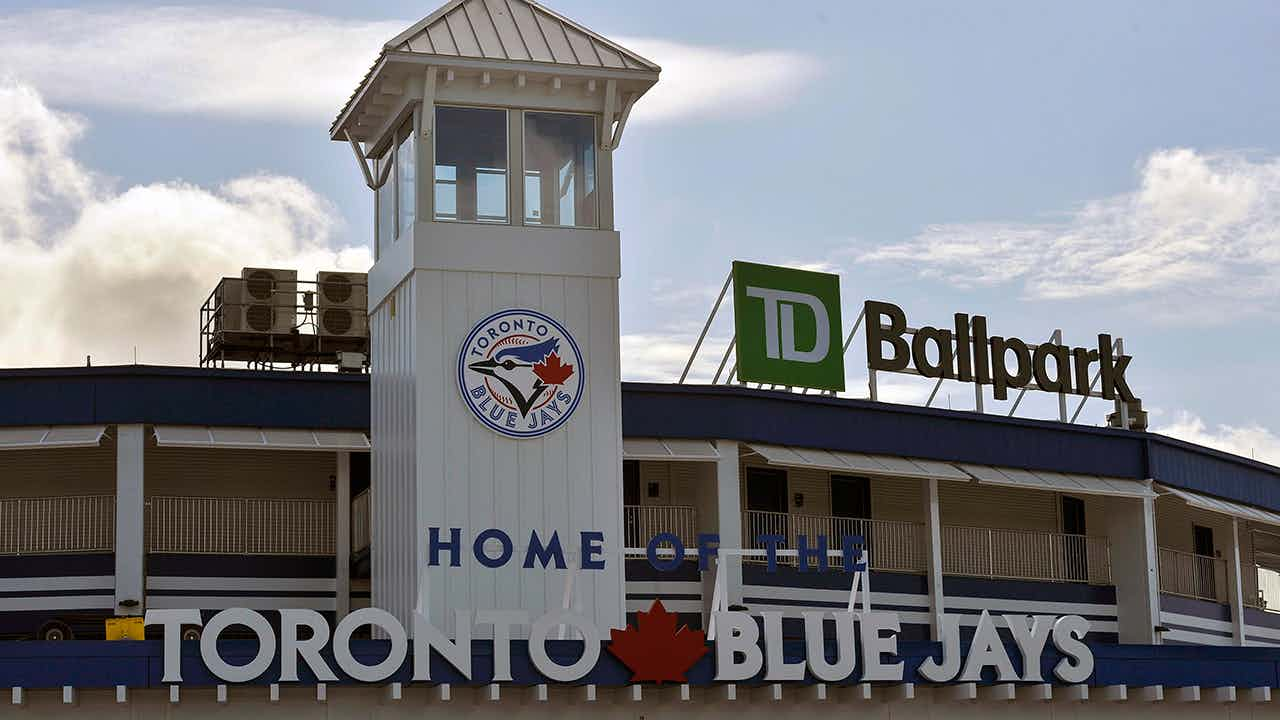Ross Atkins Speaks About the Offseason

I’ve already written a little bit about some of the comments from Blue Jays GM Ross Atkins on this week’s At The Letters podcast, with Ben Nicholson-Smith and Arden Zwelling of Sportsnet. As I explained in a post on Wednesday, Atkins was pretty emphatic at times in his message about the Jays’ front office being a genuine team effort — something that came up rather conspicuously, though very possibly coincidentally, in the wake of comments from Alex Anthopoulos last week about how much he valued the autonomy he has to make baseball decisions in his new position with the Atlanta Braves. But that was far from the only topic of interest that was discussed during the nearly hour-long segment.
There was, in fact, a whole lot that he talked about, and that, I think, is worth parsing and thinking about. So… uh… let’s do that!
Fortunately I typed out a whole hell of a lot of it — which, incidentally, I do not recommend! (If you ever have to do such things, though, I thoroughly recommend using oTranscribe.com, which is beautifully simple, and was clearly designed who actually does this stuff.) Here goes nothing…
* * *
First up, Atkins tried to explain why the market has been moving so slowly this winter so far:
I think there’s some interesting names that are on the market, in trade and free agency, that are obviously significant pieces to different teams’ equations. I think that once one of these — whether it’s Stanton or J.D. Martinez on the offensive side, or Jake Arrieta on the pitching side — typically those types of impact players well tend to set the market and set the pace. That’s one theory. I think there are a lot of different angles and ways to think about it, but mostly, what I’ve experienced in the last five to ten years is that more teams now value players in a similar way. So, I think that’s good for baseball, because that allows then more trade discussion. I think what that then creates is more patience in free agency — to understand what’s available to you throughout trade, throughout free agency, and to make sure you have a picture of the entire market. That also creates opportunities for teams to identify talents that they know they want, and to be more aggressive and assertive on. We just haven’t seen that this year.
Hmm. Well this certainly doesn’t make me not think about the fact that last year there was at least one team I can remember that made a concerted effort to not have “patience in free agency,” and maybe didn’t quite “make sure” they had “a picture of the entire market” the way they could have. *COUGH*
Perhaps the Jays learned a lesson last winter?
One hopes. And how could they not have?
Of course, what also isn’t being mentioned here is Shohei Ohtani. Tammy Rainey of BP Toronto had a great piece today on how Atkins’ hands, like everybody else’s, seem to be tied by the holding pattern the Ohtani saga remains in. (Incidentally, over at Medium, Daniel Brimm has an interesting piece up on whether to spell the name Otani or Ohtani — I know I’ve found myself using both at various times.)
Atkins has been very open about his desire to add Ohtani — and the Jays definitely turned some heads this week with a media department job posting that suggested that speaking “Spanish, Japanese, or French is an asset” — but he’s far from alone in that. Mariners GM Jerry DiPoto made that fact abundantly clear in comments from a podcast that were quoted on Wednesday in a fascinating piece at MLB Trade Rumors. And as Tammy’s piece suggests, adding a player of Ohtani’s calibre for a fraction of what he’s worth is going to change some team’s offseason entirely. Once he’s off the market, whoever signed him will be that much closer to championship contention, with all kinds of resources left to spend; whoever missed out will likely then turn their attention to Stanton, Martinez, Arrieta, etc. — and so those guys/the Marlins likely won’t have much incentive to accept offers until the Ohtani picture gets clearer.
Perhaps, then, this is simply a unique circumstance, and we can’t just yet stop expecting the Jays to try to jump the market.
To that end, I thought it was interesting that Atkins didn’t lament their strategy last winter when asked about regrets he has so far in his career as GM. Though he did offer a pretty clear reason why he might not have.
I kind of knew going in that if we weren’t healthy it was going to be hard for us, because we didn’t have a Triple-A team that we could say, “OK, you know what, if we don’t have Josh Donaldson for a month…”. We tried to account for that. The one thing — it’s hard to talk about regret, mistake, as a front office executive, because you oftentimes have to talk about a player if you do that. And that’s not an area — I have too much respect for players that fail at the big leagues and are below average major league players. I have so much respect for them that it’s a difficult area to go into. But I could go back at certain decisions, and there are times where I’d say, “I probably didn’t place enough value on Position X,” “I probably didn’t place enough value on how we would offset that injury.” Again, resources are finite, you can’t do it all. But there have been times where I’ve said, “OK, there was an opportunity to potentially protect for an injury there better, how could we have done that?” We have to think that way. We have to constantly think that way, and we always are. How we are going to deal with injury is focus on prevention, and then how we account for it if it happens — it’s what you can control, right? Because it’s inevitable.
He’s absolutely not wrong that injuries were devastating to the Blue Jays’ cause in 2017, but not to be overlooked is the fact that the club spent $28 million in salary last year on one of the first big contracts signed, and one of the last big contracts signed, and that they got a combined -1.1 fWAR, or a combined -1.9 rWAR, out of the two players, both of whom were below replacement level by both versions of the metric. Woof. Add in another $6.25 million for getting nothing out of Steve Pearce, and they were really hurt by those choices on the free agent market.
Granted, this mess wasn’t entirely about timing, and it wasn’t entirely about misreading the market for one dimensional power, either. The problem wasn’t helped by the fact that power came so easily to so many in a year with an allegedly “juiced” ball, which helped change the baseline for hitters (the league average slugging percentage, for example, has gone from .386 in 2014, to .405 in 2015, to .417, to .426 last season). Nor were the Jays helped by genuine decline (or, at the very least, struggle) from their players beyond that: Kendrys Morales went from a 111 wRC+ in 2017 (though his mark was 135 for the final four months of that season) to 97; Steve Pearce went from a 136 to 99; José Bautista went from 122 in his “down year” of 2016, to a Pillar-ian 80 this season. (They, perhaps, weren’t helped by an ownership group that nudged them toward signing the fan favourite Bautista, either.)
Whatever it was, one hopes — and surely believes — that the regrets Atkins and his crew have go deeper than just the way injuries weren’t covered for.
The injury concern is definitely in front of mind, though, too. And for good reason.
We’ve got to protect our middle infield. Devon Travis is a player who is remarkable when he’s on the field, and we hope that he is, but we’re not going to plan on him playing 160 games. We’re not going to plan on Troy Tulowitzki playing 160 games. So, who’s going to play the 80 to 160 games between those two positions, and what’s the best possible fit to create depth and versatility? Ideally that person is left-handed and can also play the outfield. Not easy to get. Ideally he’s a switch hitter and he steals 40 bags a year — right? That’s first and foremost, and to the extent that we can protect our infield, that’s the priority. And then secondarily would be complementing our pitching in some significant way. How do you define significant? That could be a guy that’s a fourth- fifth-calibre starter, or an elite reliever, or some hybrid of those two. And then we will look — we feel we have good depth in our outfield, and Teoscar Hernández is a really exciting young player, but we feel we can complement Ezequiel Carrera and Steve Pearce and Teoscar Hernandez a little bit better, and not just rely on a player that had a good month or month-and-a-half of Major League Baseball performance.
Not much terribly new here, but it’s worth considering a couple things, such as: Uggggggh, do we really have to go through another year of Pearce and Carrera in left field???
I have no doubts that the front office itself is asking this question, but the problem is that… it’s not even that there’s floor there — Carrera, who came into 2017 with a career wRC+ of 84 over nearly a thousand career plate appearances, isn’t exactly a great bet to keep up his 117 wRC+; and Pearce has been up and down (and often injured) throughout his career — it’s that there are maybe enough pieces there that at least one of them sticks. I very, very much like the idea of ditching Pearce and Carrera however possible and rethinking the entire position, but having those guys there gives someone like Hernández or Anthony Alford, or Lourdes Gurriel, or maybe even eventually Vlad Guerrero or Bo Bichette, a pretty clear path if it becomes clear early on that they’re no longer getting anything out of the minor leagues.
But, of course, there will be other pieces to come, too. Perhaps Ohtani! And, if he does somehow land here, it almost certainly will be in part due to the fact that the Jays are willing and able to offer him outfield at-bats.
There’s also that middle infield bat that Atkins talks about. He offered more on that “ideal” he spoke about — something he seems to be make a little clearer this time around than he did last year, when his words about ideally getting “younger” and “more athletic” were often held against him when, quite obviously, doing so in one swoop or in short order and without busting the budget proved too difficult:
I was speaking idealistically to paint a picture, and it’s not really that realistic just to go out and say, “this is the type of player we want,” and go out and get him. But some version of that could be in two players, could be in three players. Or it could be taking the risk, or gamble, on — whether that’s internal or someone that we value more than another team, and putting them in a different position, to find out if there is upside — to find out just how big those error bars can be, by taking some risk. Having said that, we need to win, and we need to find a way to protect that depth. Richie Ureña can be a part of that, Lourdes Gurriel can be a part of that, and there are other players that may or may not be available that might be a part of that. And there’s also free agents that could be that solution for us. But again, the silver bullet and the ideal is one thing, and what’s realistic is another. But for the purposes of painting a picture, we need to somehow come close to that to the best of our ability, and, like I said, that may be in a hybrid-type scenario.
Some of these caveats coming out now is perhaps simply that it’s hard to says such things in a ten second sound byte on a highlights show.
Whatever the case, it’s interesting that he’d talk about the “hybrid” approach, which seemed to go so awry last year, when far too much was asked of Ryan Goins and Darwin Barney. I suppose adding a player who can both hit and field might make sense!
What it underlines, I guess, is that there are a whole lot of ways the Jays can go here, and that Atkins is cognizant of the need for keep some flexibility in his lineup. It certainly wouldn’t be a bad thing to end up with a surplus of talent at certain positions by the time next winter rolls around, but you’d hate to make an acquisition now that blocks a player who is closer to being able to help you than you expected. Atkins can use the fact that some talent appears to be genuinely getting closer to his advantage — he could push hard for an outfielder and hope that between Ryan Goins, Gift Ngoepe (who Ross suggested is believed internally to be a 70 defender), Richard Ureña, and Lourdes Gurriel, they have enough to cover the middle of the infield. He could push hard on an infielder and hope that the outfield situation sorts itself out among internal pieces and whatever smaller acquisitions they can make.
Ideally they do all that and more, of course. But however they proceed, it sure sounds like they really are going to do it in an attempt to actually contend in 2018:
I feel a personal responsibility, Mark feels a personal responsibility — and it doesn’t stop there. Ben Cherington, Tony LaCava, Gil Kim, Andrew Tinnish, Joe Sheehan, Mike Murov, John Gibbons — feel a personal responsibility to put a winning product on this field for the fans of Toronto and for the country of Canada. I secondarily feel an immense amount of responsibility to Russ Martin, and Josh Donaldson, and J.A. Happ, and Marco Estrada, who wake up every day — and Troy Tulowitzki — thinking about one thing, and it’s winning. When we don’t, I feel personally that we’ve let them down. So I feel every day thinking about how we are going to have the best possible team we can have, given the resources that we do.. . .I personally don’t feel that you should ever be in a “rebuild mode” in this market, and this environment. There might be soft resets based on circumstance — based on where you are as a team. It’s managing risk and mitigating risk, and understanding that there are times where you should be more opportunistic, but personally I don’t buy into the strategy that we’re not going to be a good team for five and six years.
He later added:
You have to win on every front of player development, scouting, high performance, culture, environment, major league development, major league advance scouting, professional scouting, international scouting. If you are elite in all of those areas, then you can have a remarkable turnaround where you don’t need the five and six year lulls. But there’s no team in professional sports that doesn’t have a lull. It’s a part of it. I just don’t buy into the strategy that, hey, let’s pick higher, and let’s just not be a good team for a significant period of time.
And:
I did talk about the potential of a down year or two. There may be a time — I hope not, I hope not, I really do — but there may be a time, like I said, every professional sports team goes through it, where this might not be the time. We just experienced it at the trade deadline. We didn’t trade Vladimir Guerrero and Bo Bichette for Player X at the deadline, whoever that may or may not have been. We didn’t triple down. That’s a part of that theory and that strategy, that this may not be the best time to put a significant amount of your cards — putting all of your cards on the table really doesn’t ever fare well — but putting a significant amount of your cards at a time where you feel that this is the time to really push and really make sure. You can’t do that every year. You run out of assets and resources. So, it’s a spectrum. I guess that the point I was trying to make is that I don’t think that the Toronto Blue Jays, or that professional baseball teams, have to take the five to ten year lulls to be sustainable, contending teams. I think if you have the right environment and culture there’s going to be down years, but fans can always remain excited, free agents can always be interested, young players coming up in our system and acquired talent that’s already there can believe that, because of our culture, because of our environment, we can overcome any win projection that other objective measures have on us.
Notable in here is the stuff about not ever putting all your cards on the table, which I think is a subject we’ve probably exhausted of late. What really jumps out at me, though, is how that last bit is something that, coming from a different messenger perhaps, would have had a lot of fans excited at some point. Atkins is basically talking about quantifying things that years ago were part of the murky world of intangibles — nutrition, methods of thinking about and working toward goals, the importance of the relationship between player development people and the players themselves. Instead of looking at things as almost supernatural — this player has bad intangibles, that guy is just a “winner” who makes people better for some intangible reason — teams have become more and more sophisticated in trying to penetrate that murk and put what they learn from it to use.
That, of course, is big picture stuff. In the short term, Atkins is certainly leaving the door open to at some point pull the chute — and it seems like he’s cautious in talking about turnarounds coming too quickly — but it sure doesn’t sounds like that will be happening here soon. Nor should it, given how much talent remains on this roster — a hard thing to remember after last season sometimes, but don’t forget ZiPS has the Jays just four games behind the Red Sox at this point.
That next lull absolutely could begin around the trade deadline. But with the right pieces brought in this winter — the right kinds of players who can bridge this roster until the day when guys like Guerrero, Bichette, Alford, Hernández, Jansen, as well as Travis, and probably-not-but-in-an-ideal-goddamn-world a re-signed Josh Donaldson, will make up the position player core of the Blue Jays — or the right resources kept open going forward, and the right chips coming back if they move players like Donaldson, Happ, and Estrada next summer, they could absolutely be out of that mess sooner than most believe. Certainly sooner than the “accept it’s hopeless and tear it all down” types seem to realize.
And if the lull doesn’t start quite so soon, all the better for us. Or at least for 2018. And though that may make 2019 more challenging, and 2020 more challenging, I’d sure rather that than watch the club run from those challenges, pack up now, trade Donaldson for whatever they can get, trade all the pieces they might as well trade if you move out Josh (Happ and Estrada for certain, maybe Smoak or Martin if you can, maybe even Stroman, Sanchez, or Osuna, who are all only here until the end of 2020 anyway), then say, “Welp, see ya in at least a couple years!” At which point there will still be challenges!
Continuing to try to be good, and continuing to try to find pieces in trade and on the free agent market that will provide value here for multiple years, obviously helps in the near term, but also helps keep the talent level decent enough for when the farm system really does start paying dividends. The reason Alex Anthopoulos pushed so many of those chips in in 2013 was because having Bautista and Encarnación signed so cheaply gave them such a head start in terms of turning budget dollars into on-field value that, along with enough other nice pieces already in place, with the right moves the Jays were genuinely capable of putting together a roster that projected to be elite. The hope is that the Jays already have Guerrero and Bichette on track to become similar pieces for the next great version of the Blue Jays — similar to how the pre-arb years of Kris Bryant and Addison Russell were taken advantage of in Chicago, or Gary Sanchez and Aaron Judge in New York — and that there will actually be a decent team to surround them with when they arrive (if they arrive as advertised/hyped — still an enormous if).
Part of that is also maintaining enough flexibility for then so as to be able to make the team even better. This is why you don’t see the Jays locking in players to especially long deals, or shedding prospects in an effort to get better immediately. The Jays are muddling along, trying their best to add as much talent as they can using the resources they have and are willing to use — just like Atkins says. It’s not sexy, but it maximizes what they can get out of both the short- and the long-term without forcing them to focus entirely on one or the other.
In fact, it would seem to me that the Jays have already muddled along to the point where it’s perhaps too close to the arrival of guys like Guerrero and Bichette to tear it all down and look only at the long-term. There’s just too much risk of having some ultra-valuable years in their careers wasted on teams that are still in the early stages of building.
That’s far from the only reason to continue to try to compete. For Atkins, it would seem that there’s genuine belief in the talent that’s here — both on the field, in terms of who can bounce back and perform in 2018 as they were expected to in 2017, and in the front office, where they likely aren’t nearly as pessimistic as some fans are about their own ability to figure this all out and get it right this time. There’s also, as he said, belief that the organization can create systems that maximize players’ talents, and can help the club over-perform their projections.
Is some of that stuff a little weird or fanciful or corporate or abstract and hard for anyone out here just wanting to watch meaningful, good baseball to really get behind? Oh, probably! But if it’s keeping the Jays from pointlessly blowing the whole damn thing up, I’m all for it. And I think you should be too.
Recent articles from Andrew Stoeten





